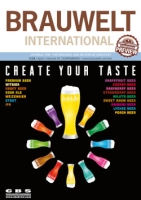Objective analysis of the aroma, taste and mouthfeel of beer is critical to success in modern brewery operations. In this paper we review current best practice, and offer advice on how to derive maximum value from sensory quality management systems.
Beer flavour has never been more important. It lies at the centre of the process of achieving customer satisfaction. Of course, good marketing of beer still plays a very important role. But today’s marketing is about finding out what individuals like, and telling them where to find it. This paper is about the use of modern flavour evaluation techniques to help make beers that people like.
The objectives of flavour analysis in the brewery
Flavour analysis can be used for two things in a modern brewery.
1.
2.
....
For years, the Indian beer market has been pegged "the next Asian Klondike" as concerns growth potentials but that has been it. Having run in-to all kinds of trouble in China, international brewers stayed clear off entering the Indian beer market, apparently fear-ing another financial disaster.
When United Breweries, India’s number two brewer with a market share of almost 40%, offered to sell a 26% stake to a foreign bidder, the usual
suspects Anheuser-Busch, Carls-berg, Heineken, Interbrew, Kirin, Scottish&Newcastle and South African Breweries expressed interest.
Whether one of them will make a quick move is another thing.6m. United Breweries’ best selling brand is Kingfisher Lager which is sold in 25 countries..
This paper covers systems, including sensors, control equipment and factory data acquisition (FDA), for breweries as presented at Brau 98 in Nuremberg. In recent years, the number of companies offering instrumentation and control systems as well as the number of suppliers of complete solutions of control technology for the brewing industry has risen in quantum leaps. The following review describes the decision criteria involved in selecting a control system and makes an up-to-date comparison of systems available on the market.
In the original meaning draft beer is a fresh and unheated beer which is dispensed from a barrel or a keg. The consumers will get a very original and fresh smell and taste. Now the expression "draft beer" is also used for bottled beer which is not treated by heat. This means a higher microbiological risk.
As all technological processes affect flavour stability to a greater or lesser extent, work on this subject has been extended to all areas of brewing technology over the last two years. This publication describes the results and makes appropriate recommendations for obtaining impeccable flavour stability.
Methods based on image analysis are flexible, rapid tools enabling both the elevator company and the maltster to monitor and adapt their processes. Thus, image analysis is a suitable technique for integrated chain control in the barley-malt-beer chain. TNO Nutrition and Food Research Institute has assessed a number of image analysis systems for their usefulness in collection and malting of barley.
Beer quality is determined by proper yeast treatment and propagation of pure yeast cultures. This paper deals with essential requirements.
Huge attention has been paid over the years to the ambition of achieving prolonged shelf life in beer. In the context of haze life, this can be achieved, provided a brewer is conscientious and willing to invest some money in achieving the goal.
Change and cost pressures have dominated the brewing sector in recent years. Restructuring and rationalisation reoccur in increasingly shorter cycles: Companies are becoming "leaner". Analytical laboratories in breweries and thus the actual quality control have not remained untouched by these developments.
hat must be done in order to keep pace with developments - in order to achieve the highest level of efficiency by using the means available in the most productive way, without endangering product quality at any time and in any way whatsoever. On the contrary, in the present jostling for competitive advantage, every possible means have to be employed in order to push product quality to the highest possible level and keep it there constantly.e.e.
....
A calcium oxalate precipitate in the bottle can lead to feared gushing, but in principle it can be avoided. The causes and conditions that lead to calcium oxalate precipitation are known. Yet difficulties with the phenomenon crop up repeatedly.
Practical experience gained in past years has shown that the sole cause of gushing problems was frequently calcium oxalate precipitations. This article examines the background and conditions as well as giving practical instructions on how to avoid calcium oxalate precipitation. Since the topic is a very extensive one, this article is being published in two parts. The second part will deal in particular with calcium oxalate problems in wheat beers produced by bottle fermentation.
....
Following introduction of the aniline index (AI) as an analytical tool in breweries, further investigations were carried out, aimed at finding new uses and deriving more information from the index.
Methodology, the train from mashing-in to storage tank, as well as the behaviour (rise) of the AI during storage of pale bottom fermented beers as a function of temperature and duration were described in a first report (1). A supplementary note: All analytical instruments should always be cleaned carefully (last rinse always with double-distilled water or chromatographic water) as analyses take place in the trace concentration region.
Increase of AI in whirlpool
Fig. 1 shows the increase of the AI and TBI (2) resulting from the wort rest in the whirlpool. 2 and 3).e...
Current issue
Most Read
BRAUWELT on tour
Current issue
Most Read
BRAUWELT on tour
-
Hopsteiner
Optimization of kettle hopping prior to dealcoholization
-
Hopsteiner
Excellent digital Service: the Hopsteiner Customer Portal
-
Hopsteiner
Variations in hop aroma depending on crop year
-
Hopsteiner
Playing with tradition: Hopsteiner Hopoils - Type Hoptanical
-
Hopsteiner
Crop and market update & hop crop 2023 estimate

